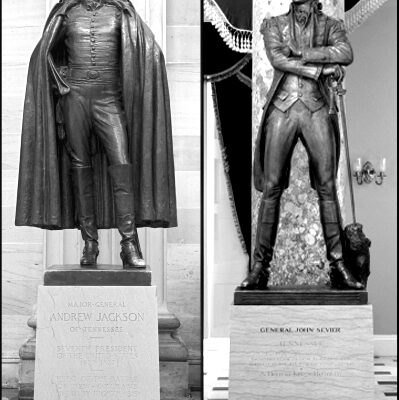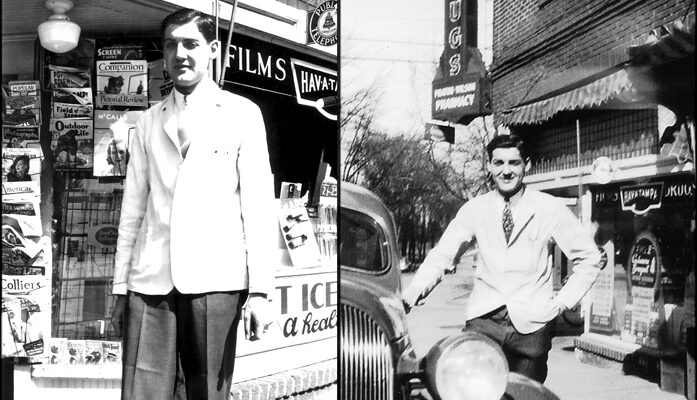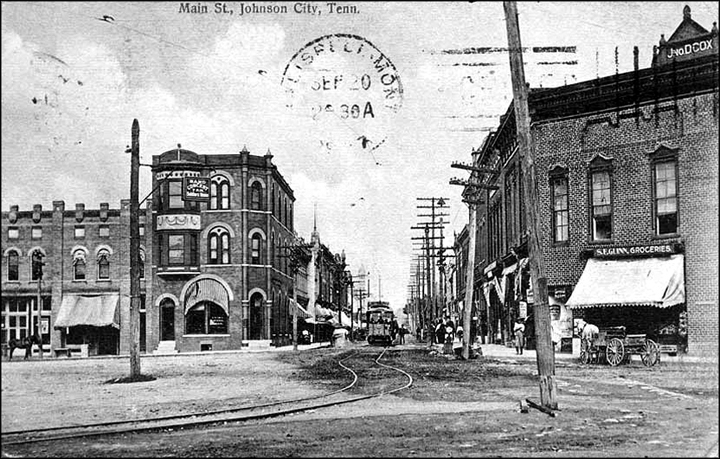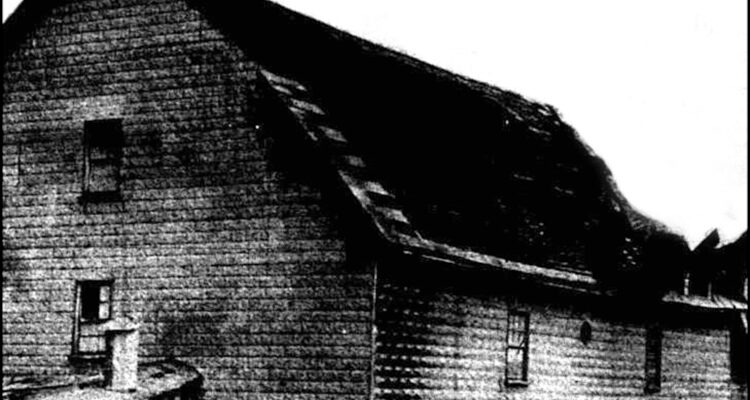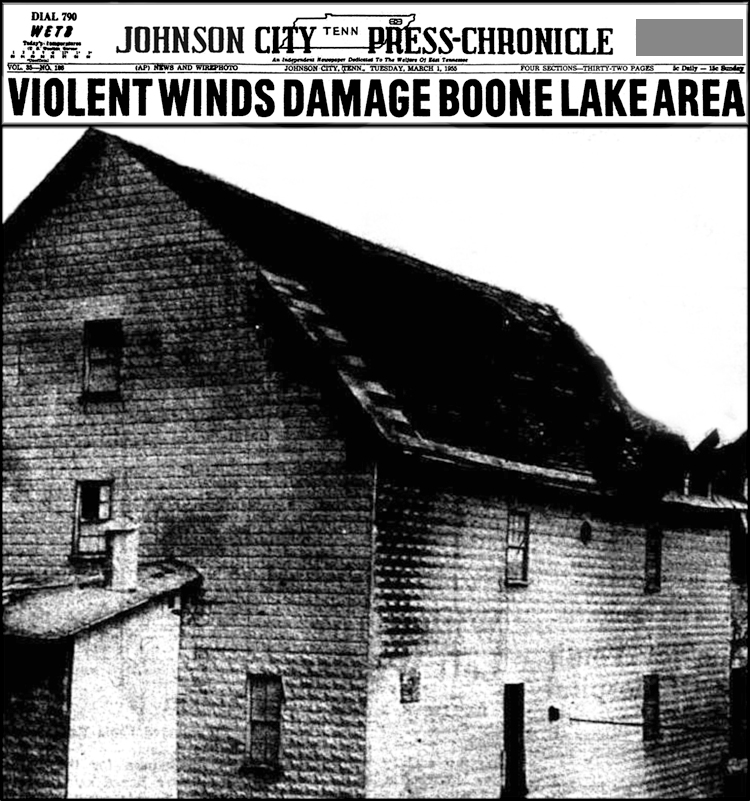In April 1895, Charles Russell, a longtime resident of Jonesborough, Tennessee, gave readers of the Herald and Tribune newspaper an unusual story to read. Here is a paraphrase of his account.
“Early one morning, I fell into a deep sleep in my comfortable porch swing near downtown Jonesboro. When I awoke from my slumber several hours later, I quickly noticed that my surroundings seemed strangely different with curious noises that greeted my ears. I looked in the distance and saw factories on every side of the town, but oddly observed no smoke emitting from any of them.
“I hurriedly went into my house, donned my coat and vest and scurried down to the street where I encountered another surprise. The streets and sidewalks were no longer dirt. The roads were granite and the sidewalks were granolithic (crushed granite and cement) in every direction. I thought surely I must be dreaming. This was not the Jonesboro I knew before my nap.
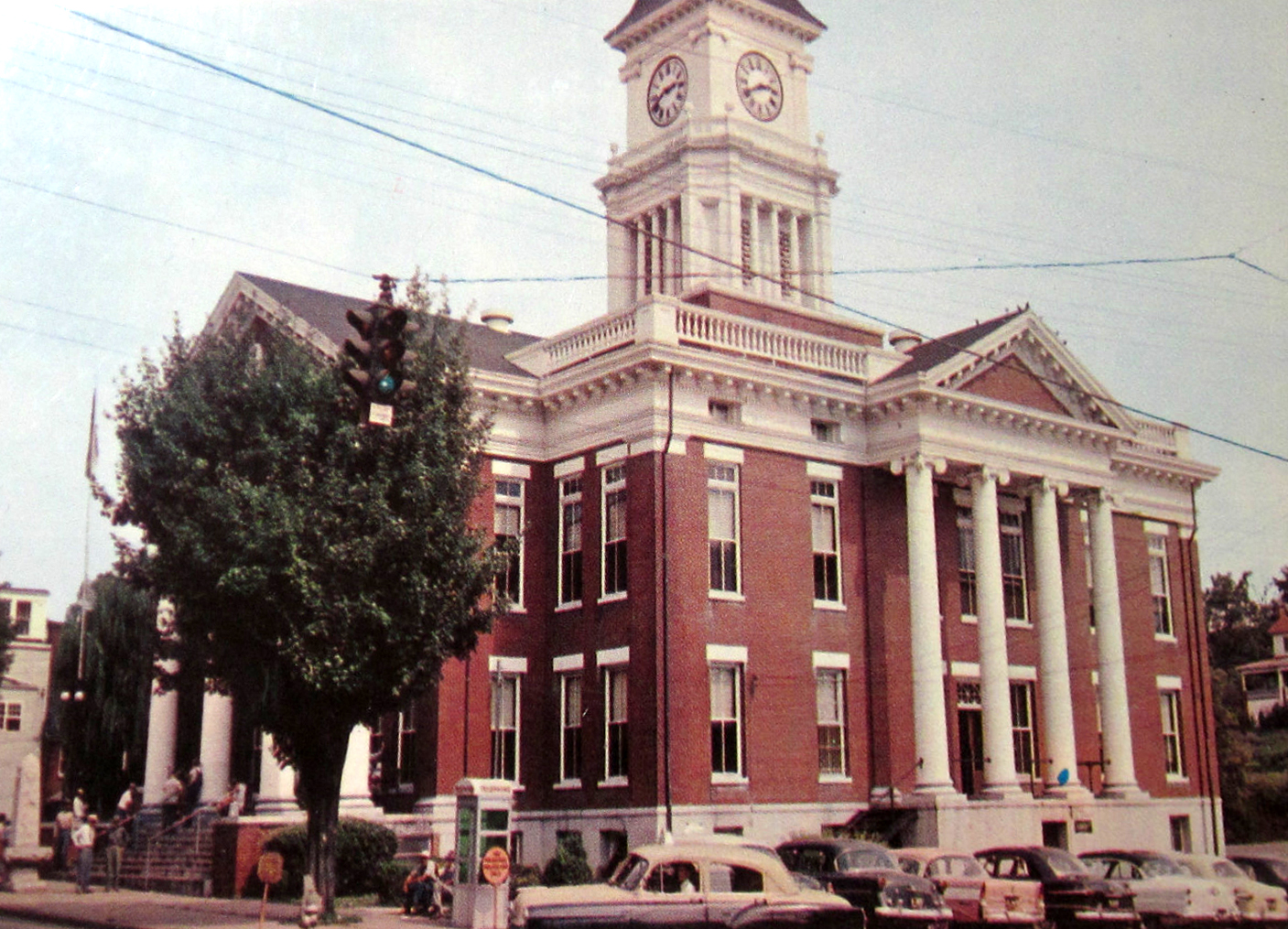
Jonesboro Court House as it Appeared About 1960
“I continued my stroll toward town and soon encountered a gentlemen whose attire was much different from mine. I introduced myself and he said his name was James Dosser, a familiar name in Jonesboro's business past. He wore knee pants and shoes with a platinum buckle and a short roundabout with a fancy silk shirt. His cap had a gold band around it with numbers on it. I noticed another man similarly dressed nearby with a silver band on his cap and different numbers. Where was my Jonesboro?
“Charles stunned me when he told me this was Jonesboro, Tennessee and showed me the date on his morning newspaper – April 1, 1960. Before I took a nap, it had been April 3, 1895, but after my snooze, it was 65 years later. I seemed to have traveled forward in time during my nap. 'Ah,' Dosser said, 'When you went to sleep, electricity was in its infancy and not readily available; now we do everything by electricity. It is a way of life with us. The women even wear essentially the same type of clothing as men.'
“I asked Charles the meaning of the gold and silver bands on the different caps worn. He explained to me that they indicated the wealth of the individual, which the law required them to wear in order to accurately collect income tax. 'The gold bands,' he said, 'signified billionaires, of whom there were four in town: John D. Cox, L.W. Keen, Ed Boyd and me, Charles Russell.'
“I asked him how the four gentlemen came to accumulate such a sizable fortune. He explained that Mr. Cox had been banking all his life; Mr. Keen had invented a process of taking pictures by electricity; Ed Boyd was in the wholesale grocery business; and, as for himself, he secured a position as post office inspector and made some good investments.
“The silver bands represented millionaires and there were quite a number of them in town. Among them were J.J. Hunt; proprietor of 'The Lightning Elixir;' S.H. Anderson of the Bicycle Feed and Sale Stable; Tate L. Earnest, Secretary of the Treasury; T.B. Hacker, attorney; and Cramp Smith, Editor of 'The Baptist Howler.'
“I was surprised to learn that all my old friends were still living and asked for an explanation. He told me that in the year 1900, the Old Mill Spring was found to possess something that extended life to those who encountered it. In fact, since that time, there had been only one funeral in Jonesboro and that was of a citizen who died while in Washington D.C. seeking political office.
“Russell showed me public parks in various parts of the city with fountains and statuaries, among which I noticed were statues of Walter Brownlow, Sandy Stuart, Bob Dosser and R.M. May, who had donated the parks to the city. He escorted me to some of the principal factories, where almost everything was made.
“Where Col. Dungan's house once stood was a large poetry factory where about 200 employees were rapidly filling orders for poems, which the superintendent informed me were to go to 47 different states. He didn't indicate which state was missing and I didn't ask. 'No two places' he said, 'want the same kind of poetry. For instance, one package of a certain dialect goes to Massachusetts, while in nearby Johnson City, one of our suburbs, we cannot sell anything but blank verse.' After that remark was made, I perceived the presence of a distinct rub between Jonesboro and Johnson City.
“We next visited a sermon factory situated at the junction of the Atlantic, Pacific and Flag Pond Railroad and the old Southern. Here I had the pleasure of meeting the Rev. B.B. Bigler who was being measured for a two-hour sermon.
“We next visited other factories and public buildings and, as we returned from Telford on a mid-air car, we heard the electric chimes ringing from the tower of a large cathedral. My guide informed me that it was to celebrate the marriage of A.C. Britton, one of the former mayors of the city.
“I next inquired about some of my old friends and found various changes had taken place. Since the discovery of the medical properties of Old Mill Spring, physicians had nothing to do in their line of work. Therefore, Dr. Hoss was farming by improved methods, having his farm lighted by electricity so he could now raise two crops where he once raised only one.
“Dr. Stuart was now the Congressman from the district and Dr. Pierce was celebrated as a hypnotist, having large audiences every night at the auditorium. Jasper Peoples had become mayor, edging out Bridge Baxter by only seven votes in the previous election. Silas Cooper was still clerk of the court, while his oldest son Joe was manager of The Electric Sausage Plant, situated on the Fall Branch and New York Railroad. Peter Tierney was still Governor.
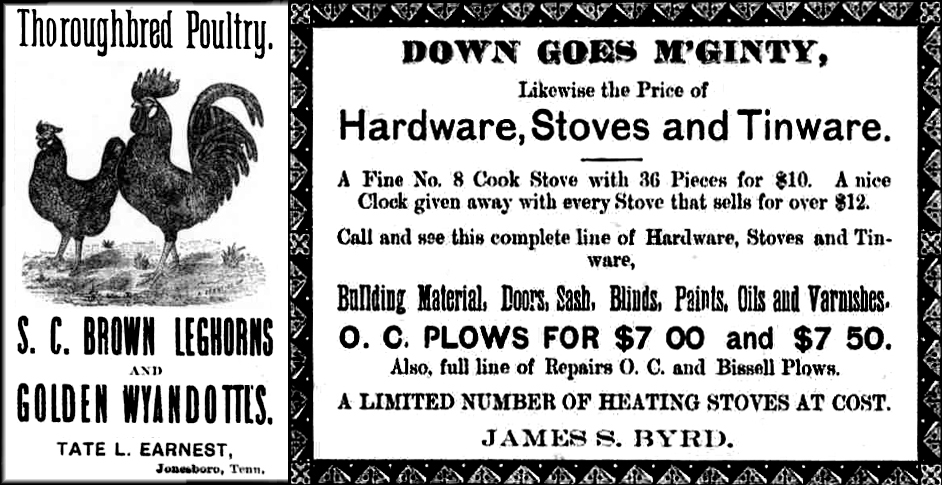
Two Jonesboro Advertisements from 1895
“I was delighted to meet so many of my old friends as they looked 65 years later and found out that they were doing so well. I met Scott Hickey who was running a large egg factory, the only one of its kind in the South. Joe Febuary was proprietor of the Embreeville Steel and Tool Works and his large factory was under the management of Charley Brown.
Captain McPherson was one of the postmasters and Wright Hoss the other. I saw a large nine-story building of white marble, occupied by Herbert McPherson & Sons, wholesale jewelers, who had a large trade with South American cities.
“After seeing more of the sights of the city, Charles and I walked down a sharp incline in one of the parks. I managed to collide with a horse rack at the old court house and received a sudden shock. Suddenly, I awoke and found myself back in 1895 Jonesboro again. Charles was nowhere to be seen and the streets and sidewalks were dirt again. Apparently, I had been dreaming and walking in my sleep.”
After finding this clipping, I decided to share it with my readers as my April Fool expose. Although the story is quite whimsical, the people were former residents of Jonesboro. It is interesting that Mr. Russell's imagination, as to what 1960 Jonesboro would look like, was a bit off the mark. It never grew into a massive city, but instead retains that wonderful charm and quaintness to this day. Don't change Jonesborough; we like you just as you are.

